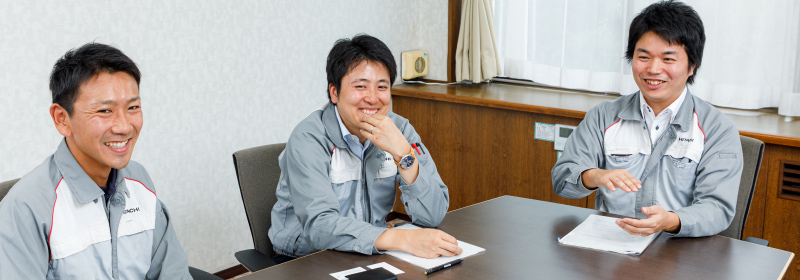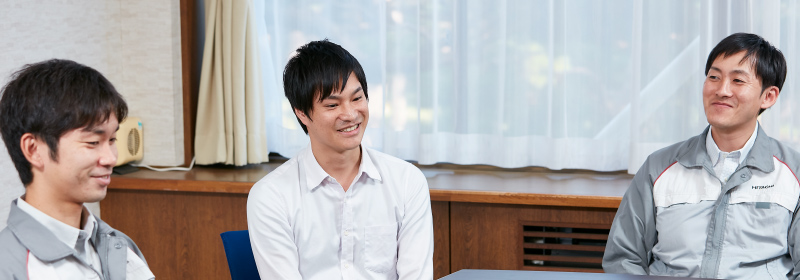In fact, elevators open and close their doors frequently, and there are many sliding parts, so the structure is prone to air leakage. Enhanced car airtightness was a precondition for controlling air pressure modulation. In the initial design, however, we were unable to ensure airtightness, so we couldn’t raise air pressure as we wanted. Hiroyuki Tateyama, who worked on tasks such as assessing the strength of the car frame and airtightness of the car for the Elevator and Escalator Product Quality Assurance Dept., says “We used caulking material to raise airtightness around the car, but even so it was hard to raise air pressure, and running fans faster in the pressure control system just made more noise.”
The solution to the problem was proposed by Tomotaka Kariya of the Mechanical Device Development Group. Kariya says “I thought of a system which would use the airflow that is naturally generated by air pressure change to close the gaps, and the idea even got a patent. It involved the decision to change the structure with only a year to go before the shipment deadline, so it was tough to pitch the idea to the people involved.” Kariya’s idea made a big contribution to raising airtightness.
But just changing the design didn’ t mean that everything would go well. The hardest struggle was the final adjustment after the cars were assembled on site. To deliver the elevators, they had to get certified by an official Chinese authorization agency. That required braking experiments to bring the elevator from high speed to an emergency stop, which involved considerable mechanical shocks. It was possible that the comfort that we had worked so hard to build in might be lost. Tateyama says “Under intense pressure, we all worked together, including the on-site workers, to make adjustments in the spirit of making the elevators even better than they had been before the testing. It was really tough, but we were all delighted to have finished the elevators into a good product and delivered them to the customer.”










